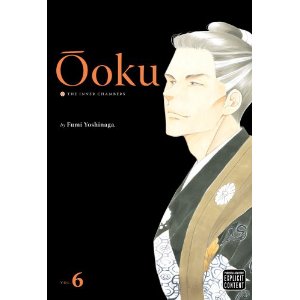Oresama Teacher is rapidly becoming one of my favorite shojo series due to the fact that it isn’t like most of the other manga in the Shojo Beat imprint. Instead of exploring teen romance, this manga focuses on dumb comedy. Even though many of the characters are idiots, they are also endearing because their idiocy stems from personality quirks that also make them strong. Mafuyu is going away for high school in an attempt to put her juvenile delinquent past behind her, but she finds out that her teacher Takaomi is her long-lost neighbor who trained her in all of her fighting techniques.
In the third volume of Oresama Teacher, Mafuyu goes home to visit her old gang. She’s curious to see how they’re doing without her leadership, and she misses her friends. Mafuyu gets caught up in her old school rivalries and winds up kidnapped with her two former sidekicks, the enthusiastic Kanagawa and the masochistic Maizono. There is nothing that better expresses the differences between Oresama Teacher and more typical shoujo manga than a great scene of Mafuyu lecturing her former lackeys about the proper way to position one’s hands when being tied up by kidnappers. She gives a full on mini-tutorial about techniques to escape binding, then realizes that her instructions are useless because the boys are already tied up. She breaks the boys out, only to be pushed aside as they face their confrontation with their rivals. Mafuyu wonders about the nature of their friendship, only to realize that everyone’s acting unconcerned about her help because they need to stand up for themselves on their own. This was actually a cute message, delivered with a light touch along with Mafuyu’s humorous MacGyver-like fighting techniques.
One of the reasons why I like Oresama Teacher so much is that there isn’t very much conventional romance in it. Mafuyu may be a hardened juvenile delinquent, but she has very little idea what to do about the opposite sex, other than registering that she may have confusing feelings for someone before she moves on to give an enemy a well-deserved beatdown. The fourth volume of the manga brings back Mafuyu’s gender swapped disguise as Natsuo when Takaomi announces that the Public Morals Club has to fight the Yojimbo club. Mafuyu is worried about Hayasaka’s fighting abilities. He’s good at fighting but is so single-focused that he lets himself get hurt. As Natsuo, Mafuyu tries to teach Hayasaka how to dodge and block and think more strategically in a fight. Hayasaka doesn’t seem to be clued in that Natsuo and Mafuyu are never in the same place at the same time, and look alarmingly similar.
One of my favorite moments in this volume was the depictions of torturous mental calculations Mafuyu does about Hayasaka’s fighting abilities while she’s thinking in class. She stares at him intently, throws her head down, bangs on her desk, mopes, and then indulges in an evil smirk when she hits on her training plan. Hayasaka looks mystified and then both confused and alarmed.
Both volumes end with a Mafuyu/Takaomi story. In one, she’s forced to stay over at his place when she accidentally gives her house key to the school’s bancho. In another, they go to the beach with complications as Mafuyu doesn’t even remember that she can’t swim until she’s floating on a swim toy in deep water. While the prospect of a student/teacher relationship isn’t a plot point that comes up very often in the manga that gets translated here, it is hard to picture anything happening with Mafuyu and Takaomi at this point in the series. Takaomi is so manipulative and evil, yet weirdly protective when it comes to Mafuyu actually suffering any harm.
I enjoy Oresama Teacher a lot more than other shoujo humor titles. There’s something about the juxtaposition of all the dumb, character based humor and violent fights that just has me much more invested in wanting to know what will happen to the characters even after four volumes.
Review copies provided by the publisher.




